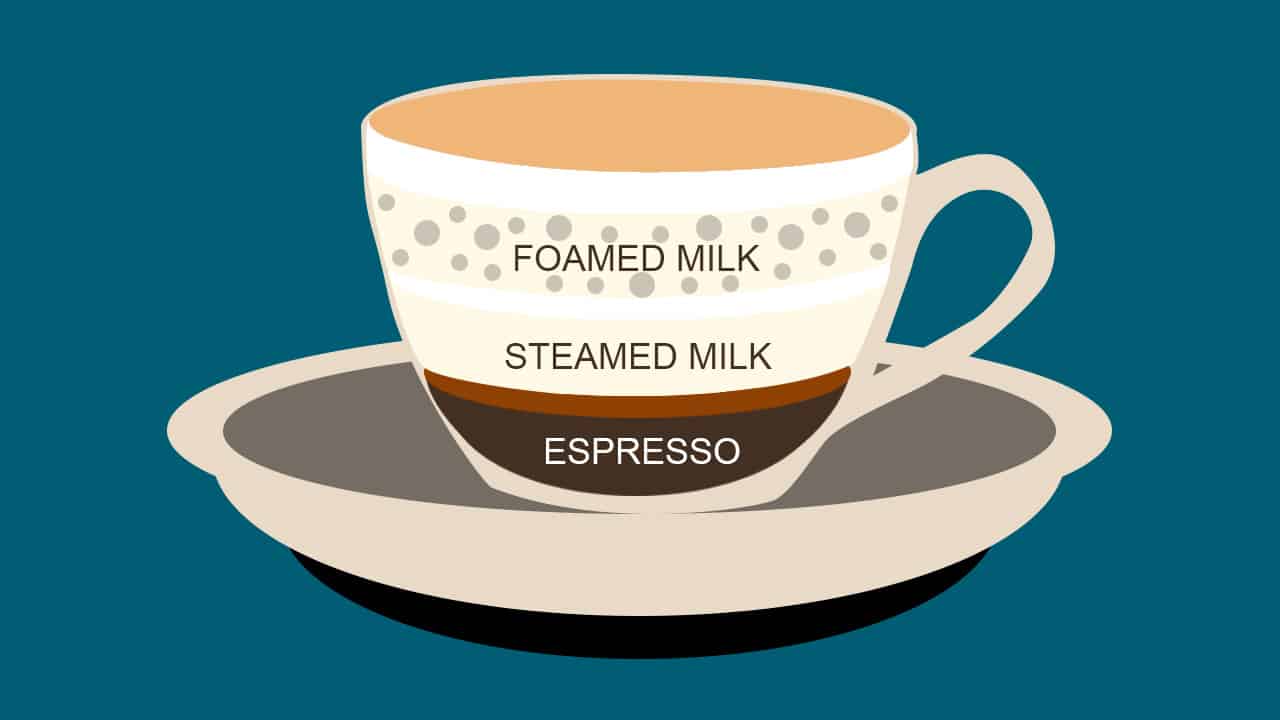Welcome to Kings of Caffeine!
Our aim is to make you as educated as possible in the world of coffee, so you can confidently order or make a coffee that you know you’ll love!
So if you have ever wondered…
How to make a Cappuccino?
Then wonder no more!
We will explain in clear and concise language how to make the perfect Cappuccino and offer up the answers to any other related questions we think you might be interested in.
Now, let’s jump in!
Skip to a section:
A Cappuccino is an Italian coffee beverage, approximately 150ml to 180ml (5oz to 6oz) in volume – made up of one third Espresso, one third steamed milk and one third foamed milk.
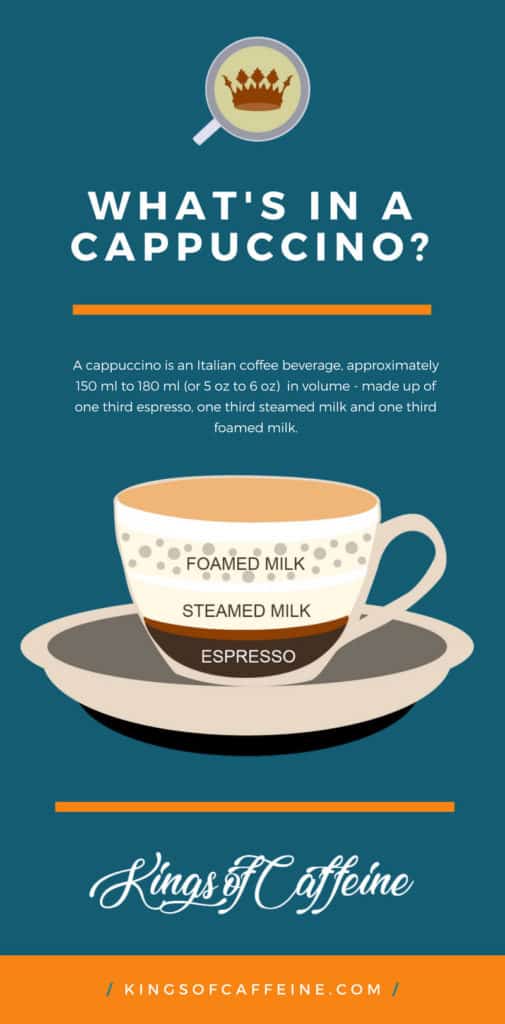
Share this Image On Your Site
The origins of the name date back to Italy in the 16th century with an offshoot of the Franciscan order: The Monks Of Capuchin.
The Monks of Capuchin commonly wore a coffee brown, hooded robe – the Italian word for which is cappuccio. Actually the word cappuccino translates directly to ‘small capuchin‘.
However, it was not the Italians that first applied the name to coffee, this had its origins in Vienna with a modified version of the word: kapuziner.
Mentions of coffee beverages and coffee houses are found in Viennese history around the 1680’s, but it would not be until the 18th century that the word kapuziner would be given to a coffee drink which contained, in addition to coffee – cream, spices and sugar.
The first generation of the Cappuccino that we know and love today is mentioned in 1930’s Italy and bore a large resemblance to the Viennese kapuziner, though at this stage it was more like brewed coffee with milk.
Finally the 1950’s saw the rise of the Espresso machine, this revolutionised the drink and saw the final addition of a steamed milk top, producing the beverage we see today.
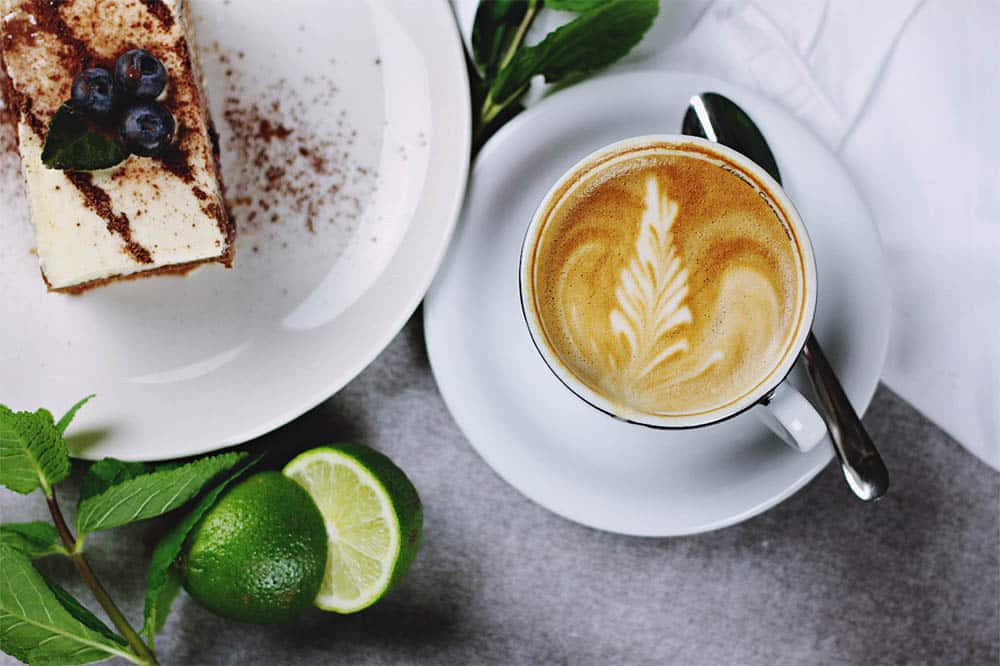
It is common practice (though not in Italy) to top the Cappuccino in a chocolate or cocoa dusting. There are many variations on the market which include many cocoa grades to sugar granules coated in cocoa.
Cinnamon or nutmeg can also be used.
Because the Cappuccino has a 1:3 ratio, it has a great balance between the taste of the Espresso and the dilution and sweetness of the milk making the Cappuccino taste stronger than a Latte but not as strong as a Flat White.
The milk also gives the Cappuccino a luxurious, coating quality to its mouth-feel.
Making the perfect Cappuccino yourself gives a kind of satisfaction that you just can’t achieve from a bought one, so let’s find out how that’s done!
Fill a coffee cup with hot water and place it to one side – by keeping the cup at a high temperature, less heat will be required in the milk later on, improving its flavour.
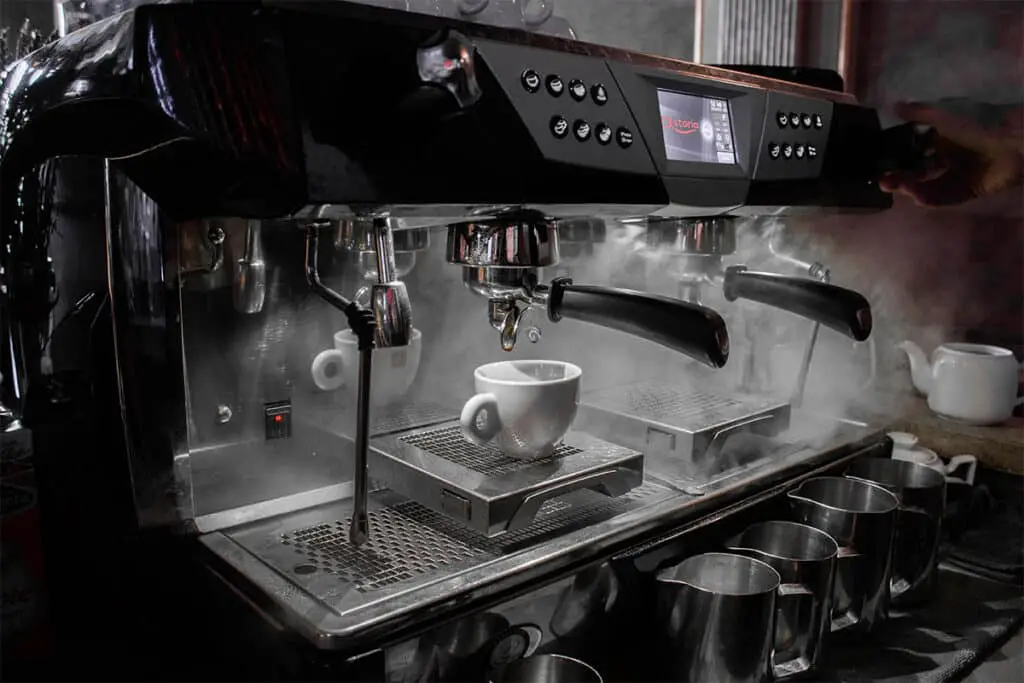
The Espresso Shot
Clean the portafilter than wipe it dry with a tea towel.
Fine grind approximately 5g of coffee to throw away (this ensures only the freshest beans will make it into the drink and if you have changed your grind setting since the last grind that first 5g will still be the old size), before grinding a timed dosage of coffee.
Weigh the grounds, I’m using 18g but this depends on the coffee, your taste, etc. but for this Espresso I’m using 18g.
Level out the coffee by moving it around the basket with the side of your finger.
Compact the grounds with a tamper – this is done by pressing the tamper directly down, on top of the coffee grounds, ensuring an even spread. This will guarantee that water passing through the grounds will travel at the same speed regardless of where it penetrates.
Tampers we love!
Run a small amount of water through the group head, empty the previously filled cup and place it in position.
Extract the coffee, looking to produce 36g of liquid Espresso (2:1 ratio), if you have ground fine enough the extraction time should be around 30 seconds.
For more information on making the perfect Espresso checkout our comprehensive guide!
The Milk
Add a small amount of milk (any cold milk will do) to a pitcher.
Steaming the milk should take 5 – 6 seconds in total. First texturise the milk; this is done by sitting the steam wand on its surface for a few seconds. The steam wand is then plunged deeper, allowing the milk to heat up further without affecting the texture created in the previous step.
Tap the pitcher on the table a couple of times and give it a swirl, this is a process called polishing and will ensure a smoother, shinier texture on the milk.
Clean and purge the steam wand.
Combining The Ingredients
Swirl the Espresso before pouring in the milk.
The addition of a sprinkling of chocolate or cinnamon can be used to flavour the coffee.
Espresso machines we love!
So in the following sections you’ll find out:
If you already know which home technique you want to use, feel free to click the title and skip straight to that section.
But before you move on there is a couple things you should know:
It is actually impossible to make Espresso without a machine as it has a very specific definition which is mostly based on the pressure the Espresso machine can apply. What we will be making however, is a strong Espresso-like coffee.
As the process for preparing the milk will be the same for whichever technique you use, I have outlined this in its own section below, which you can skip straight to by clicking HERE.
Finally, before we begin I’ll quickly talk about bean choice and grind size as once again, this will be the same for every technique.
Coffee bean selection
Espresso is characterised by its rich, strong flavour so a light or medium roasted bean won’t be strong enough for these brewing methods. This is why we recommend using a dark roasted bean.
The grind
Espresso has a very fine grind and to achieve the best tasting coffee we recommend grinding fresh beans yourself. A Burr grinder will be your best bet here as it provides the best way to get a uniform grind.
If you don’t have a Burr grinding, don’t worry! Any grinder is really okay or just purchase a bag of finely ground coffee.
Coffee grinders we love!
This is our most ideal method and is the closest you can get to making Espresso at home without a machine.
Prepare your hot water.
Once the water has boiled fill the water reservoir on the Moka Pot.
Add 20 – 22 grams (0.71 – 0.78 ounces) of your ground coffee to the Moka Pot’s filter basket.
Add the spouted top.
Place the Moka Pot onto a stove at a medium heat (no hotter).
As it heats the pressure will build, pushing coffee from the lower chamber into the upper chamber.
When you hear the first bubble, get that pot off the heat and pour immediately.
Moka Pots we love!
We are not going to operate the AeroPress as it was intended so please be safe as you are dealing with hot water and could easily hurt yourself.
So firstly flip your AeroPress upside down.
Push the plunger into the main chamber of the AeroPress quite a bit so a seal is produced, making sure to leave enough room in the top to add your coffee and water.
Rinse the filter and put it to one side.
Add 18 grams (0.6 ounces) of your coffee grounds into the top followed by 90 grams (3.2 ounces) of hot water.
Stir with a small spoon ensuring that every one of your tiny grounds are completely coated by the water.
Place the filter on top.
Let sit for 90 seconds.
After 90 seconds invert the AeroPress and place it on your cup.
Press down gently and evenly until you hit the bottom.
Cafetières we love!
Scoop ground coffee into the Cafetière, one heaped tablespoon per cup of coffee to be made.
Pour just enough hot water to cover the coffee, no more. This will allow the Carbon Monoxide to escape the coffee grounds.
Let sit for approximately 30 seconds, swirl, slowly pour in the remaining water and stir gently. Once again, the quantity of water required is determined by the number of cups of coffee to be made.
The coffee is left to sit for 3 minutes; the cap is then placed on top.
With a gentle hand, push the top down slowly.
Pour the coffee into your cup.
Foaming milk with a French Press (Cafetière)
Pour enough milk into a microwave safe jug or container and place in the microwave for approximately one minute.
Pour into the French Press and start plunging up and down in quick succession until the milk is at your desired texture.
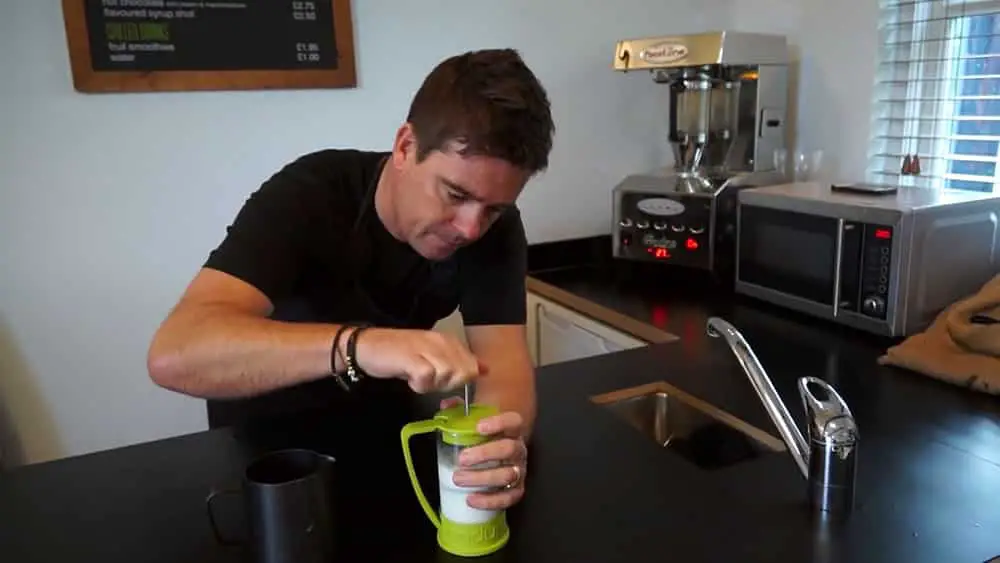
Tap the French Press on the table a couple of times and give it a swirl, polishing the milk.
Pour the milk over the coffee.
- Heat milk over the stove and use a whisk.
- Purchase a frothing wand.
- Heat milk, pour it in a suitable container than shake.
- Purchase a milk frother.
Now that you have your foamed milk, pour it into the Espresso keeping the pitcher high so there is a long pour. When nearing the end bring the pitcher down so it is touching the cup and increase the speed of the pour, this will produce a small amount of foam on top.
That’s it!
We hope you found this useful – now get out there and make some coffee!
As always if you have any questions or feel like we have missed anything please send your questions/suggestions to [email protected]
Small Notice
If you click on any of our Amazon links and make a purchase, we earn a commission at no additional cost to you!

